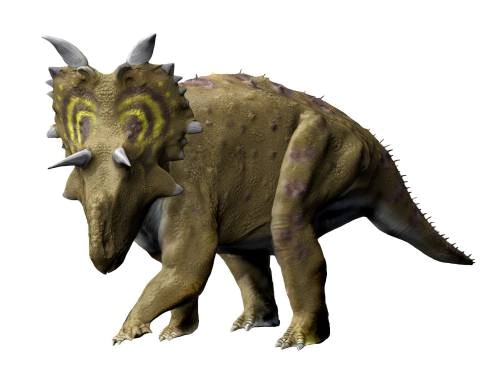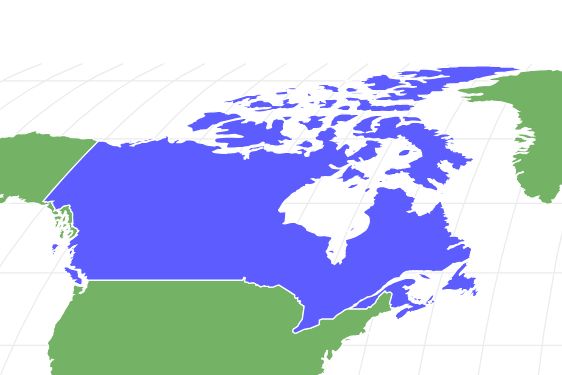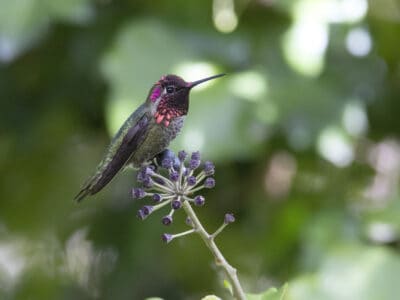The Xenoceratops is the oldest known horned dinosaur ever discovered in Canada.
Advertisement
Xenoceratops Scientific Classification
- Kingdom
- Animalia
- Phylum
- Chordata
- Class
- Reptilia
- Order
- Ornithischia
- Family
- Ceratopsidae
- Genus
- Xenoceratops
- Scientific Name
- Xenoceratops foremostensis
Read our Complete Guide to Classification of Animals.
Xenoceratops Conservation Status
Xenoceratops Facts
- Fun Fact
- The Xenoceratops is the oldest known horned dinosaur ever discovered in Canada.
- Most Distinctive Feature
- Xenoceratops had two strange-looking big horns located above eyes
- Distinctive Feature
- Xenoceratops had bony frills on its head
- Habitat
- Grasslands in the subtropical region of Canada
- Diet
- Herbivore
Xenoceratops Physical Characteristics
- Weight
- 4,000 pounds
- Height
- 7 feet
- Length
- 19.6 feet
- Venomous
- No
- Aggression
- Low
View all of the Xenoceratops images!
The Xenoceratops is the oldest known horned dinosaur ever discovered in Canada.
Xenoceratops was a two-ton herbivorous dinosaur that lived in present-day Canada during the Late Cretaceous about 80 million years ago. This makes it the oldest known large-bodied, horned dinosaur ever found in Canada. It is also one of the oldest in North America. Although only bits of this dinosaur’s anatomy are preserved in fossil records, scientists have learned a lot of important things about the evolution of the horned dinosaurs by studying the Xenoceratops.

Xenoceratops lived around 80 million years ago.
©Nobu Tamura email:[email protected] http://spinops.blogspot.com/ http://paleoexhibit.blogspot.com/, CC BY-SA 4.0, via Wikimedia Commons – License
Description and Size
Xenoceratops was a genus of centrosaurine ceratopsid dinosaurs that lived during the Late Cretaceous (about 80 million years ago). It is a member of the ceratopsian family of dinosaurs. All members of this family are quadrupedal herbivores. Other members of the group include the Triceratops and Styracosaurus.
For a while, scientists thought this dinosaur was an ancestor to the Triceratops. However, recent discoveries have shown this to be inaccurate. However, they’re still closely related since they belong to the same family.
The Xenoceratops is known from only one species, Xenoceratops foremostensis. The genus name translates as “alien horned face,” a reference to the two strange-looking big brow horns located over its eyes and a big shield at the back of its skull. It’s also likely that the name was a reference to the rare nature of the fossils since discoveries from this branch part of the fossil record were quite rare. The specific name foremostensis refers to the Village of Foremost, the location of the dinosaur’s first discovery.
This dinosaur was about the same size as a rhinoceros, with an estimated length of 19.6 feet and a weight of over 2 tons (4,000 pounds). It was roughly seven feet tall as well. Although average size for a dinosaur, the Xenoceratops was the biggest ceratopsid alive 80 million years ago.
Like other ceratopsids, this dinosaur had bony frills on its head. However, the ornamentation on the Xenoceratops’ frills differed from that of other members of its family. There were two knob-like bony projections near the midline of the frill. There was also a single straight spike next to these knobs, while a large triangular knob was present on the anterior corners of the parietal.
Diet—What Did the Xenoceratops Eat?
Like other ceratopsid dinosaurs, the Xenoceratops were herbivorous. It most likely fed on ferns, cattails, and flowers growing in the primeval river deltas of the Late Cretaceous. This dinosaur had a birdlike beak that was used for cutting the plants it ate. Scientists believe they might have had an advanced dentition and may have relied on microflora in their gut to assist the breakdown of the plant matter they ate through fermentation.
Habitat—When and Where Xenoceratops Lived
Fossils of the Xenoceratops were found in the Foremost Formation near the town of Foremost, Alberta, Canada. The dinosaur lived during the Late Cretaceous approximately 80 million years ago. While Alberta is now a cold province in Canada, it was completely different during the Cretaceous Period when this dinosaur lived there. It was a subtropical region with rainy days and dry spells with no rain.
Threats and Predators
The Xenoceratops lived alongside predaceous dinosaur fossils, including relatives of the Tyrannosaurus rex, the duck-billed dinosaurs, and club-tailed ankylosaurs. However, given the massive size of this dinosaur and the formidable horns on its head, the carnivorous dinosaurs that shared the same habitats with it were probably not a major threat.
Discoveries and Fossils—Where Xenoceratops was Found
The Xenoceratops was one of the few dinosaur fossils from the Southern part of Alberta. Most of the other dinosaurs from Alberta lived further north. Only one species of Xenoceratops has been found to date. The description of this dinosaur was based on skull fragments from at least three individuals. All the fossils were discovered in the Foremost Formation, near the town of Foremost, Alberta, Canada.
Wann Langston, Jr. excavated the skull fragments from Formation in 1958. However, he didn’t study or describe the fossil for several decades. Instead, it was stored in cabinets at the Canadian Museum of Nature in Ottawa.
In 2003, David C. Evans and Michael J. Ryan found the specimens and decided to study them. They found that it belonged to a new species and genus and published a comprehensive description in 2012.
Considering the age of the formation, Xenoceratops foremostensis is the oldest ceratopsid dinosaur from Canada. Also, even though other dinosaur fossils have been found in the Foremost Formation, the Xenoceratops is the first to be described.
Extinction—When Did Xenoceratops Die Out?
The Foremost Formation, where fossils of this dinosaur were found, has an estimated age of 78 million years. This makes it the oldest ceratopsid ever found in Canada. The dinosaur is older than any of the other members of its family, which is why its discovery is quite significant, as it gives important insight into the evolution of this family of dinosaurs. Scientists are not sure of the reasons for this dinosaur’s extinction. However, from all indications, they probably died off before the extinction event that took place at the end of the Cretaceous.
Similar Animals to the Xenoceratops
Similar dinosaurs to the Xenoceratops include:
- Triceratops: This is a genus of dinosaurs that lived about 68 million years ago. Like the Xenoceratops, Triceratops also had horns on their faces. But they had three horns instead of two like their closely related cousins.
- Styracosaurus: This is a genus of dinosaurs that lived during the Late Cretaceous period. This dinosaur had even more spiked horns than relatives like the Triceratops (4-6 spiked horns).
- Judiceratops: This is a genus of horned dinosaurs that lived around the same time as the Xenoceratops. Both dinosaurs lived in different regions of Canada and had very similar appearances.
Related Animals
View all 13 animals that start with XXenoceratops FAQs (Frequently Asked Questions)
When was the Xenoceratops alive?
The Xenoceratops lived in Alberta, Canada, about 78 million years ago during the Late Cretaceous period. It is the oldest horned dinosaur fossil ever found in Canada and one of the oldest in North America.
How big was the Xenoceratops?
Xenoceratops was a medium-sized horned dinosaur. It was about 20 feet (6 meters) long and weighed roughly 4,000 pounds (about 2 tons). This dinosaur was also roughly seven feet in length.
Where did Xenoceratops live?
Xenoceratops lived in present-day Alberta, Canada. Fossils of this dinosaur were found in the Foremost formation, located near the town of Foremost in Alberta, Canada. It is one of the few identified dinosaur fossils from that formation.
Thank you for reading! Have some feedback for us? Contact the AZ Animals editorial team.
Sources
- Wikipedia, Available here: https://en.wikipedia.org/wiki/Xenoceratops
- Prehistoric Wildlife, Available here: http://www.prehistoric-wildlife.com/species/x/xenoceratops.html
- New York Times, Available here: https://www.nytimes.com/2012/11/13/science/xenoceratops-new-type-of-horned-dinosaur-is-identified-in-canada.html
















